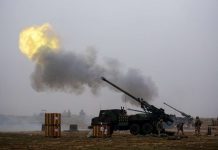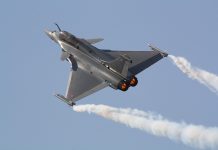
In a strategic move to enhance Russian capabilities in the ongoing ‘Special Military Operation’ (SVO), High Precision Systems, a prominent defense company in Russia, has introduced a new remote-controlled Kornet anti-tank missile (ATGM) launcher. The company confirmed that the system has successfully passed all necessary tests and is now ready for combat deployment. While details of its use remain uncertain, there are signs that it might already be in active service. The system will make its international debut at the IDEX-2025 defense exhibition in the UAE.
The company stated, “Tests confirm that the remote-controlled Kornet ATGM launcher meets performance expectations, now capable of engaging both moving and stationary targets with automated detection and targeting,” according to TASS.
This development follows a similar announcement from Kalashnikov about a remote-control solution for the Konkurs-M ATGM, enabling operators to control up to three launchers from 100 meters, while also reducing setup time to under 20 minutes.
The Kornet, known to NATO as the AT-14 Spriggan, is a highly advanced Russian anti-tank missile system that has revolutionized battlefield tactics since its introduction. Developed by the KBP Instrument Design Bureau, the Kornet has evolved into various models for different tactical purposes, ranging from infantry to vehicle-mounted systems.
The original Kornet (9M133) entered service in 1998, designed to replace older Soviet wire-guided missiles like the 9K111 Fagot and 9K113 Konkurs, offering improved range, accuracy, and armor-piercing ability. The system employs laser beam riding guidance, requiring the operator to maintain line-of-sight but providing excellent accuracy, especially against moving targets.
The standard Kornet missile is equipped with a tandem high-explosive anti-tank (HEAT) warhead capable of penetrating tanks with explosive reactive armor (ERA), with an estimated penetration of up to 1,200 mm of rolled homogeneous armor (RHA) behind ERA, or 3 to 3.5 meters of reinforced concrete.
A key upgrade to the Kornet is the Kornet-EM, introduced at the Moscow Air Show in 2011. This variant offers extended range—up to 10 kilometers in daylight and 8 kilometers at night—and features automatic target tracking, providing a “fire-and-forget” capability, reducing missile cost and enabling simultaneous engagement of two targets.
The Kornet system offers versatility in deployment, from being portable by infantry teams to being vehicle-mounted. The Kornet-T, for example, is installed on the BMP-3 chassis, providing a mobile anti-tank solution with automatic loading and the ability to carry 16 missiles. This version can fire two missiles at once, overwhelming enemy defenses like active protection systems (APS).
The Kornet has proven its effectiveness in numerous conflicts, such as in Syria, where it was used against insurgents, and in Ukraine, where its presence has raised concerns about Russian support for the system despite Ukraine not officially using it.
Specialized variants, like the 9M134 Bulat, cater to lighter armored targets, offering reduced logistical burden by allowing infantry teams to carry more missiles. With a range of 3.5 km and 250 mm of penetration, it is effective against infantry fighting vehicles and armored personnel carriers.
For international markets, the Kornet-E is an export version, often mounted on light carriers for mobile fire groups, retaining the core features of the Russian models but designed for ease of use and maintenance abroad.
The Kornet system stands as a leading example of Russian anti-tank technology, offering a combination of effectiveness, flexibility, and cost-efficiency that has made it widely adopted across various militaries worldwide. The Kornet’s evolution from the basic 9M133 to the advanced Kornet-EM reflects Russia’s commitment to maintaining a competitive edge in anti-armor warfare.
Russian forces have successfully utilized the Kornet ATGM system in Ukraine, where it has been instrumental in targeting and destroying Western-supplied tanks. Notably, Russian troops destroyed two British Challenger tanks in the Zaporozhye region, using Kornet missiles. Yevgeny Balitsky, acting governor of the region, confirmed the tanks were struck by Kornet missiles, one of which caught fire.
Additional reports document the Kornet’s success against Western tanks, including the destruction of a Ukrainian M1A1SA Abrams tank near Avdiivka and several German Leopard 2 tanks. These incidents highlight the Kornet’s effectiveness in countering some of the most advanced Western armor, reinforcing its reputation as a formidable weapon on the modern battlefield.




